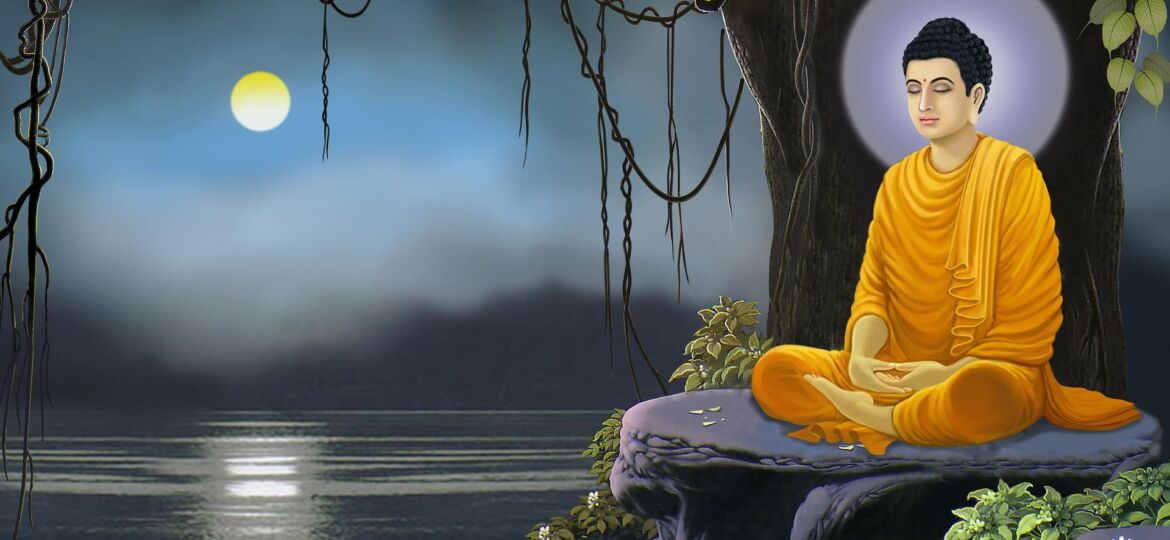
Welcome to the first installment of my blog series, “Exploring Buddhism: A Deep Dive into the Life of Gautama Buddha” In this series, I embark on an enlightening journey into the life, teachings, and legacy of one of the most influential spiritual leaders in history. Today, I delve into the early years of Gautama Buddha, born as a prince in ancient India, and explore the four sights that forever altered the course of his life.
The Birth of a Prince:
Gautama Buddha, originally named Siddhartha Gautama, was born in Lumbini, Nepal, in the 5th century BCE. His birth brought great joy and celebration to the kingdom, as he was the son of King Suddhodana, the ruler of the Shakya clan, and Queen Mahamaya. The kingdom was filled with a sense of anticipation and hope, as his birth was accompanied by various auspicious signs, foretelling his future greatness.
A Sheltered Childhood:
His early years were marked by privilege and luxury within the confines of the palace walls. As the son of a king, he received the finest education available at the time. His father ensured that he received training in various fields of knowledge, including martial arts, literature, mathematics, astronomy, and philosophy. He showed great intelligence and talent, quickly excelling in his studies.
Despite his sheltered life, he possessed a compassionate nature and a deep sensitivity to the suffering of others. He formed a close bond with his mother, Queen Mahamaya, who played a significant role in his early upbringing. His love and respect for his mother laid the foundation for his later teachings on the importance of compassion and the mother-child relationship.
Encountering the Four Sights:
As he grew older, he began to develop a curiosity about the world beyond the palace walls. Determined to gain a firsthand experience of life outside his sheltered existence, he embarked on a series of visits to nearby towns and villages.
During one of these excursions, he had four profound encounters that would forever change the course of his life. These encounters, known as the Four Sights, acted as a catalyst for his spiritual awakening and set him on the path to becoming the enlightened Buddha.
1. The Old Man:
The first sight that he encountered was that of an old man. This encounter made him acutely aware of the inevitability of aging, the fleeting nature of youth, and the impermanence of physical beauty and strength. Up until this point, he had been shielded from the realities of aging, but witnessing the old man’s frailty and vulnerability left a lasting impression on him.
2. The Sick Person:
The second sight he witnessed was a person afflicted by illness. He was deeply moved by the suffering and pain this individual experienced. He realized that regardless of one’s social status or privilege, sickness could affect anyone. This encounter shattered his illusion of perfect health and highlighted the universal nature of human vulnerability.
3. The Funeral Procession:
The third sight that he came across was a funeral procession. As he observed the grief-stricken family and the lifeless body being carried to the cremation ground, he confronted the reality of death. This experience deeply impacted him, as he realized the impermanence of life and the inevitability of mortality. It awakened in him a profound inquiry into the nature of existence and the purpose of life.
4. The Wandering Ascetic:
The fourth and final sight was that of a wandering ascetic, a monk who had renounced worldly possessions and embraced a life of simplicity and spiritual seeking. This sight intrigued him, as it hinted at the possibility of finding inner peace and liberation beyond the material world. Seeing the ascetic’s calm and peaceful demeanor, he felt a deep resonance within himself.
The Impact and Transformation:
These encounters stirred a deep longing within him, compelling him to seek answers to life’s fundamental questions. He realized that worldly pleasures and material wealth were transient and incapable of providing lasting happiness. The Four Sights acted as a wake-up call, urging him to explore the deeper meaning of life and the causes of suffering.
The experiences of witnessing old age, sickness, death, and the ascetic planted seeds of renunciation and spiritual seeking in his heart. He could no longer remain content within the confines of the palace, surrounded by fleeting pleasures and superficiality. The yearning for truth and liberation became overwhelming, and he made the life-altering decision to renounce his princely life in search of ultimate wisdom and freedom.
Conclusion
The early years of Gautama Buddha’s life were marked by privilege and luxury within the palace walls. However, the four sights He encountered – the old man, the sick person, the funeral procession, and the wandering ascetic – shattered his illusions and ignited a deep longing for understanding the nature of human existence. These encounters propelled him on a transformative path of renunciation and spiritual seeking.
In the next installment of my blog series, “From Palace to Forest: The Great Renunciation of Gautama Buddha,” I will delve deeper into the pivotal decision that led Gautama Buddha to leave behind his princely life and embark on a profound spiritual journey. Join me as I continue to explore the life, teachings, and enduring legacy of Gautama Buddha.